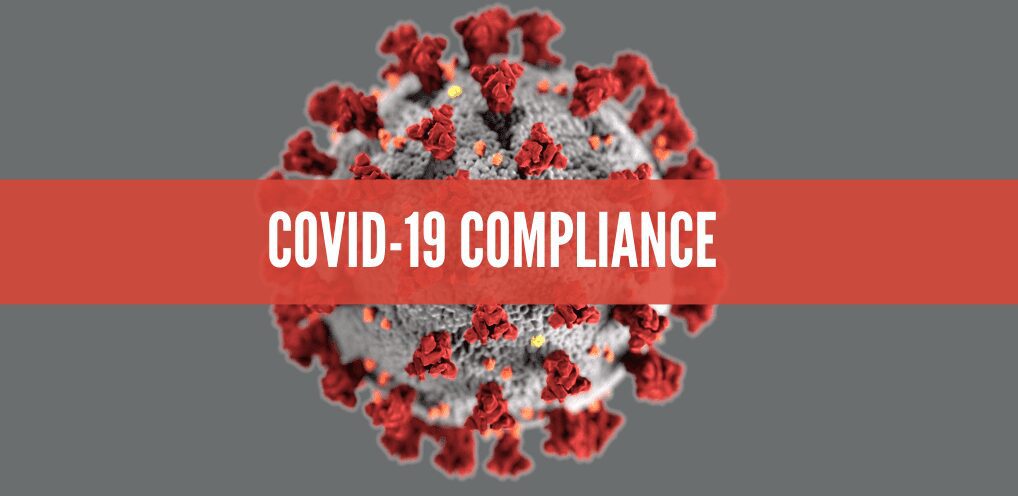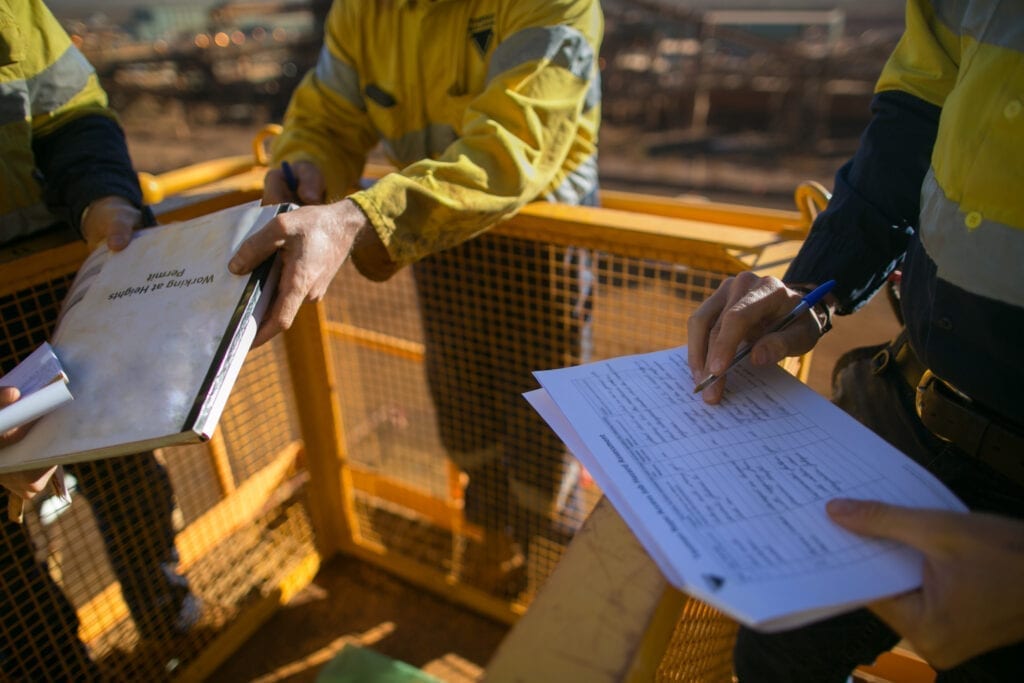
OSHA Requirements Guide for Employers
What Does OSHA Require From Employers?
If you have ever visited OSHA’s website, you know there is so much information posted regarding the different safety and health requirements employers must follow in order to keep their employees safe on the job. We are going to breakdown the key rules and regulations starting with the top 3 basic duties for employers.
Three Key Elements:
- Compliance with OSHA laws.
- Provide a workplace free from serious recognized hazards.
- Examine workplace conditions to ensure compliance.
The foundation of a successful safety program is compliance with OSHA laws. Part of the LSCI approach is to stress the importance of creating a good safety culture at your workplace.
Why Comply With OSHA’s Regulations?
- Ethical: Employers should feel a moral obligation to keep their employees safe on the job. “We don’t want anyone to get hurt, do we?”
- Legal: The obvious reason for employers to comply with OSHA regulations is because it’s the law. “We want to comply with the law, don’t we?”
- Business: It costs less to be pro-active vs. reactive. “We want to minimize expenses and maximize profits, right?”
If you’re a safety professional trying to convince upper management of the benefits of investing in a safety program, check out our Business Case for Safety e-book or call one of our consultants at 888-403-6026.
OSHA’s General Duty Clause
Every employer should be familiar with OSHA’s General Duty Clause because it really is all encompassing. OSHA can issue a citation for any safety hazard under the General Duty Clause even if it is not specifically spelled out somewhere else in the regulations. It requires employers to protect employees from any safety hazard they may encounter, including those that aren’t specifically listed in OSHA’s regulations.
(a) Each employer —
(1) shall furnish to each of his employees employment and a place of employment which are free from recognized hazards that are causing or are likely to cause death or serious physical harm to his employees;
(2) shall comply with occupational safety and health standards promulgated under this Act.
(b) Each employee shall comply with occupational safety and health standards and all rules, regulations, and orders issued pursuant to this Act which are applicable to his own actions and conduct.
-
Comply with OSHA’s standards.
-
Post the free OSHA workplace poster and encourage employees to read it.
-
Provide a workplace free from serious recognized hazards.
-
Conduct hazard assessments.
-
Maintain up to date written safety and health programs including procedures.
-
Employers must provide safety training in a language and vocabulary workers can understand.
-
Provide access to Safety Data Sheets (SDS) when employees use hazardous chemicals.
-
Train employees on what chemicals they are exposed to.
-
Use and maintain safe tools and equipment.
-
Provide warnings of potential hazards including signs.
-
Report all work-related fatalities within 8 hours to OSHA.
-
Employers with more than 10 employees must keep records of work-related injuries and illnesses.
-
Post the recordkeeping 300A form from February 1 to April 30 each year in a prominent location at your workplace.
-
Submit electronic injury and illness records if your workplace is required.
-
Provide access to employee medical records and exposure records to employees or their authorized representatives.
-
Do not discriminate against employees who exercise their rights under the Act. See OSHA’s “Whistleblower Protection” webpage.
-
Post OSHA citations at or near the work area involved. Each citation must remain posted until the violation has been corrected, or for three working days, whichever is longer. Post abatement verification documents or tags.
-
Correct cited violations by the deadline set in the OSHA citation and submit required abatement verification documentation.
A successful safety program needs to be nurtured.
Top 10 Reasons to Partner With an Award Winning OSHA Consulting Firm
OSHA compliance does not need to be confusing or take up every moment of your day. The advantages of having a third party safety consulting company by your side include:
- Professional consultants with various certifications and qualifications that know OSHA’s rules and regulations.
- Have a hazard assessment conducted without having any citations issued.
- Get a safety and health training delivered on just the topics you need.
- It is cheaper than hiring a full time safety person or can provide assistance to an overloaded safety manager.
- Shows your employees that you truly care about their safety and well-being which will boost morale!
- Gives you the peace of mind knowing you have experienced support available and shows OSHA that you are operating in good faith.
- Issues safety and health news alerts and OSHA regulation changes.
- Helps create a safer workplace for your employees and builds a safety culture.
- Will help to prevents or reduce accidents, injuries and potential OSHA citations.
- OSHA can offer employers a “good faith” discount for hiring a safety company.
First, strive to meet OSHA’s requirements. Then, work to maintain them. Next, go beyond the safety standards!

$69,058 in Penalties to Goodyear Tire & Rubber Co. for Endangering Employees
The U.S. Department of Labor’s Occupational Safety and Health Administration (OSHA) issued seven serious citations against Goodyear Tire & Rubber Co. for exposing its employees to burn, hazardous energy, amputation, and caught-in safety hazards. The company faces proposed penalties of $69,058.
OSHA investigators inspected Goodyear’s Social Circle facility in August 2017, and found that the company failed to provide effective personal protective equipment to employees exposed to burn hazards; did not provide procedures for controlling hazardous energy during equipment maintenance operations; and exposed employees to burns from heated tire treads, and caught-in hazards from unguarded machines.
“Our inspection found multiple safety deficiencies that put employees at risk of serious injury or death,” said OSHA Area Office Director William Fulcher, in Atlanta. “Potential workplace hazards must be assessed and eliminated to ensure employees are afforded a safe work environment.”
The company has 15 business days from receipt of its citations and penalties to comply, request an informal conference with OSHA’s area director, or contest the findings before the independent Occupational Safety and Health Review Commission.
Under the Occupational Safety and Health Act of 1970, employers are responsible for providing safe and healthful workplaces for their employees.

Safety Manuals for Contractors
In order to be in compliance is OSHA, 3rd party auditors like ISNetworld, and other governing agencies, contractors need to have a comprehensive safety program manual in place. The contractor safety manual should flow down to all sub-contractors throughout the scope of the project. Many sub-contractors may already have a safety program in place, but some may not, and some may have insufficient or out-of-date safety manuals that do not fully address all aspects of ensuring employee safety. Having a contractor safety manual in place should cover all aspects of worker health and safety for all jobs being performed across the project.
Conducting a Contractor Safety Compliance Audit
The most effective safety programs are proactive in nature. Contractors should be aware of all work activities that need to take place in the development of a project, which puts overall project safety squarely on their shoulders. The process of developing a safety program in itself can help catch potentially dangerous situations prior to them becoming an issue. Whether it is equipment or process improvements, additional PPE, or elimination of hazards, it is important that these are audited on a regular basis. If there are preventable health and safety risks, they can be addressed, corrected, or improved ahead of the work actually being performed. Ongoing safety compliance audits should become part of any business with high hazard equipment, processes or environments.
The Importance of a Contractor Safety Program
According to OSHA, contractors and subcontractors are deemed to have joint responsibility for the work being performed (1926.16). Subcontractors are only responsible for their respective tier of work; however, a contractor will be responsible for all activities that take place across the entirety of the project. Thus, a contractor should incorporate the development of a comprehensive safety program manual into the planning stages of the project. Keeping safety in mind throughout the duration of the project helps ensure workers remain safe, the project is in compliance with OSHA, & limits contractor liabilities.
Developing a Contractor Safety Manual
There are 3 main components in developing a contractor safety manual:
- Compliance with OSHA laws
- Providing a workplace free of serious recognized hazards
- Examining workplace conditions to ensure compliance
OSHA compliance begins with implementing OSHA Standards that address known major hazards that may exist in the workplace. OSHA compliance also requires accurate record-keeping of any workplace incidents that affect the health and safety of employees, known as OSHA 300 logs. These logs record any injuries or illnesses caused in the workplace by potential hazards, and corrective actions that need to be taken to prevent a violation from occurring again. The key here is to be proactive and take all potential hazards into consideration while a contractor develops a health and safety program that complies with OSHA laws.
All contractors, industries, and businesses engaged in performing potentially high hazard activities that may result in injury or illness to an employee need to take the appropriate steps to evaluate their business processes and operations in order to develop an appropriate health and safety program to be compliant with OSHA laws. This should be a time-intensive endeavor that a contractor undertakes in order to provide a safe work environment for their subcontractors and their employees. Any oversights in the audit process could lead to OSHA violations, employee injuries, legal fees, insurance costs, and other issues.
Step 1
Any OSHA compliance audit should begin with a thorough identification of potential physical hazards present in the workplace. These hazards should be addressed and remediated at that time as they pose the greatest immediate threat.
Step 2
Develop customized health & safety manuals containing any applicable OSHA Standards with modern and relevant updates. Research outside sources such as the National Security Council, ANSI, and other safety regulatory bodies relevant to the hazard present in the workplace for the most up-to-date information and guidelines.
Step 3
Develop health and safety training protocols and procedures that are customized to your operations. Training should be conducted by a competent trainer, and should be done at the time of employee hire, and at least annually for all employees exposed to the specific hazards. The training process should be time-consuming, taking 30-60 minutes per topic, or longer if required, to ensure proper training has occurred.
Developing a Contractor Safety Manual
Many contractors decide to enlist the help of outside resources to save precious man-hours and eliminate any potential oversights that may be missed if done strictly internally. The process of developing a comprehensive contractor safety program manual is a time-consuming process, and can be an overwhelming responsibility for businesses large and small. Working with a safety compliance service company like 1 Stop Compliance can help you identify workplace hazards and develop the appropriate contractor safety program to ensure you are in full compliance with governing safety agencies like OSHA.

New Rules on Mandatory COVID Vaccination from OSHA
COVID Vaccination from OSHA Rules Update
Is the COVID-19 ETS a law?
Legally as of today, yes, however that could change in the future.
What does this mean for your company?
A federal appeals court has given the Occupational Safety and Health Administration (OSHA) the authority at this time to push forward with the enforcement with of the emergency temporary standard (ETS) for COVID-19 Vaccination and Testing.
At its core the ETS requires employers with more than 100 employees need to implement and enforce policy around mandatory full vaccination against COVID-19 by January 4th, 2022, or submit to weekly COVID-19 testing combined with wearing a mask.
In light of this ETS there are been a number of legal appeals to this decision and even OSHA has stated that they will utilize “enforcement discretion” to give employers additonal time in order to comply. OSHA has stated they will not issue citations for non-compliance with the ETS before January 10, 2022, citations will not be issues before February 9, 2022 for failure to enforce testing, as long as companies are acting in good faith to comply with the orders.
What are the ETS Requirement?
Employers must comply with the following ETS provisions no later than January 10, 2022:
- Develop a written policy mandating that employees either be fully vaccinated, or be subject to weekly COVID-19 testing and wear a mask at work, with few exceptions.
- Determine the vaccination status of all workers by obtaining acceptable documentation of proof of vaccination (e.g., a vaccination card), and maintain a roster of the vaccination status of all employees.
- Fully remote workers, employees who work exclusively outside, and workers who not work in a location where others are present, do not have to be covered under the “vaccination or testing” policy.
- Provide up to 4 hours of paid time for employees to receive the vaccination, and provide “reasonable” paid sick leave to recover from any side effects from the vaccine. (Employers may allow employees to use vacation or PTO for these purposes.)
- Exclude employees from the workplace immediately in the event of a positive COVID-19 test or diagnosis.
- Provide employees with certain information, including what the ETS requires of employers, the company’s policy, information about vaccine safety and efficacy (through an OSHA-approved notice prepared by the CDC), and information about the criminal penalties for fraudulent statements and documentation.
- Report work-related deaths due to COVID-19 to OSHA within 8 hours, and work-related hospitalizations within 24 hours. (This reporting requirement was first promulgated in OSHA guidance in 2020.)
Employers must comply with the following ETS provisions no later than February 9, 2022:
- Implement and begin enforcing the “vaccination or testing” policy.
- OSHA states that will exercise enforcement discretion on the February 9 deadline with respect to testing for employers who making “reasonable, good faith efforts” to comply.
What does your business need to do to prepare?
- Determine if your company or state or local government employer is covered by the ETS.
- Determine the vaccination status of your workforce.
- If weekly testing is going to be needed, begin planning on how to accomplish that testing.
- Prepare a compliant “vaccination or testing” policy.
- Prepare a communication strategy.
- Prepare to process and document requests for exemptions from the vaccine mandate (or develop that process if it is not in place already)
- Confirm procedures are in place to report work-related COVID-19 deaths and hospitalizations as required by the ETS
- Determine if state law or executive order conflicts with any ETS requirement for any work locations.
- Contact 1 Stop Compliance to help you develop and implement the documentation required for this process to reduce your risk of non-compliance.
What are the penalties for non-compliance?
OSHA is authorized to issue citations, and the penalties for noncompliance under the be severe: $13,653 per violation, and up to $136,532 for willful or repeated violations.

OSHA & Cal-OSHA Safety Compliance
Importance of OSHA Safety Compliance
Complying with OSHA guidelines and regulations is important to businesses large and small, as any employee conducting high hazard activities on the job is susceptible to injuries and illnesses. OSHA advocates for employee safety, ensuring employers are providing safe workplaces, environments, materials, and equipment in which to work. There are occasions where the nature of the job demands that an employee works within a high hazard environment using potentially dangerous materials or equipment. A company must take every step possible to mitigate exposure to these hazards, and create guidelines and training procedures to minimize these dangers and the potential injuries and illnesses associated with them.
Not only is there a legal obligation to implement proper health and safety controls and procedures in your business, there is also an ethical and economic commitment an employer has to its employees. Ensuring your employees are safe and feel safe on the job has far-reaching impacts on all business stakeholders, including security, fulfillment, satisfaction, loyalty, and trust, among other things. A business that is committed to the safety of their employees will attract great employees, and in turn, enable the business to provide superior output to their clients, projects, and the community.
A company that does not identify and implement appropriate health and safety programs puts itself in a position of higher liability and overall risk. This all begins with a thorough workplace assessment and implementation of employee safety manuals. It’s estimated that the total direct and indirect costs associated with workplace injuries and illnesses exceeds $140 billion annually. These costs can come in the form of fines levied by governing agencies, loss of money, business and reputation, PR nightmares, higher insurance costs, legal costs, employee turnover and civil and criminal liability. Not to mention the impact of injuries and illnesses on the lives of individuals that could have been prevented with a proper health and safety program.
What You'll Need to be OSHA Compliant
There are 3 main components to keeping employees safe on the job, and the foundation lies in complying with OSHA:
- Compliance with OSHA laws
- Provide a workplace free of serious recognized hazards
- Examine workplace conditions to ensure compliance
OSHA compliance begins with implementing OSHA Standards that address known major hazards that may exist in the workplace. OSHA Standards were developed when OSHA began in the 1970s, some of them updated, and some of them not. The onus is placed on the employer to provide the most up-to-date versions of these Standards according to their own processes in use. The key here is for the employer to go above and beyond to get a full understanding of the hazards present in the workplace, and implement the most relevant and effective controls and procedures in preventing these hazards from harming employees.
OSHA compliance also requires accurate record-keeping of any workplace incidents that affect the health and safety of employees, known as OSHA 300 logs. These logs record any injuries or illnesses caused in the workplace by potential hazards, and corrective actions that need to be taken to prevent a violation from occurring again. For example, if a fall occurs resulting in an injury, the incident needs to be recorded in detail, and a potential corrective action of preventing another fall from occurring identified and implemented. The key here is to be pro-active and take all potential hazards into consideration while a company develops a health and safety program that complies with OSHA laws.
Steps for Putting Together OSHA Compliant Health & Safety Program
All high hazard industries and businesses engaged in performing potentially high hazard activities that may result in injury or illness to an employee need to take the appropriate steps to evaluate their business, processes, and operations in order to develop an appropriate health and safety program to be compliant with OSHA laws. This can and should be a time-intensive endeavor that a business undertakes in order to provide a safe work environment for their employees. Any oversights in the audit process could lead to OSHA violations, employee injuries, legal fees, insurance costs, and other issues mentioned earlier.
-
Step 1
- Any OSHA compliance audit should begin with a thorough identification of potential physical hazards present in the workplace. These hazards should be addressed and remediated at that time as they pose the greatest immediate threat.
-
Step 2
- Develop customized health & safety manuals containing any applicable OSHA Standards with modern and relevant updates. Research outside sources such as the National Security Council, ANSI, and other safety regulatory bodies relevant to the hazard present in the workplace for the most up-to-date information and guidelines.
-
Step 3
- Develop health and safety training protocols and procedures that are customized to your operations. Training should be conducted by a competent trainer, and should be done at the time of employee hire, and at least annually for all employees exposed to the specific hazards. The training process should be time-consuming, taking 30-60 minutes per topic, or longer if required, to ensure proper training has occurred.
OSHA vs. Cal-OSHA Safety Compliance
Individual states and US territories can implement and oversee their own versions of federal OSHA plans at the state level. These state OSHA plans are approved by federal OSHA, and must meet a minimum effectiveness of the federal OSHA standards and directives. State OSHA plans can be applied to either state/government employees, or state/government employees as well as those in the private sector.
Cal/OSHA is one of the more stringent state OSHA plans in the country, which is why it is often addressed separately. Cal/OSHA has adopted more strict guidelines as well as some unique standards addressing those not found in federal OSHA, including:
- Agriculture
- Repetitive Motion
- Heat Exposure
- Noise Exposure
- Injury & Illness Prevention Plan
- Aerosol Transmissible Diseases
- and many more
One of the largest components of Cal/OSHA that differentiates it from federal OSHA is the Injury and Illness Prevention Plan, or IIPP Safety Manuals. An IIPP is an in-depth plan tailored specifically to an individual business with a proactive focus on finding all hazards in the workplace and developing a plan for preventing and controlling those hazards. California requires that all employers covered under Cal/OSHA implement an IIPP in which all workers in an organization are trained and are encouraged to participate.
OSHA Compliance Requirements Checklist
- Comply with OSHA Standards
- Post OSHA workplace poster and encourage employees to read it
- Provide a workplace free from serious recognized hazards
- Conduct hazard assessments
- Maintain up-to-date written safety and health programs & procedures
- Provide safety training in a language and vocabulary workers can understand
- Provide access to Safety Data Sheets (SDS) when employees use hazardous chemicals
- Train employees on what chemicals they are exposed to
- Use and maintain safe tools and equipment
- Provide Warnings of potential hazards with signs
- Report all work-related fatalities within 8 hours to OSHA
- Employers with more than 10 employees must keep records of work-related injuries & illnesses
- Post the recordkeeping 300A form from February 1 to April 30 each year in a prominent location at the workplace
- Submit electronic injury and illness if your workplace is required to do so
- Provide access to employee medical records and exposure records to employees or their authorized representatives
- Do not discriminate against employees who exercise their rights under the Act (See OSHA Whistleblower Protection)
- Post OSHA citations at or near the work area involved. Each citation must remain posted until the violation has been corrected, or for 3 working days, whichever is longer. Post abatement verification documents or tags
- Correct cited violations by the deadline set in the OSHA citation and submit required abatement verification documentation
